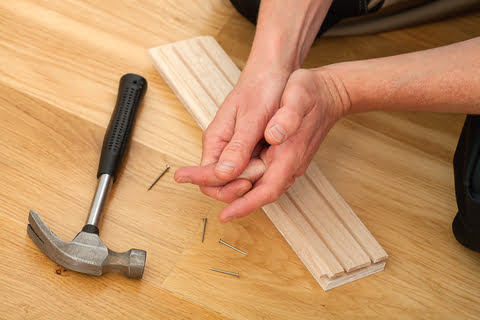Question: What responsibilities does a tenant have to maintain their unit, versus the landlord’s duties to maintain the rental?
Answer: The landlord has a general obligation to keep their rental in safe and sanitary conditions. At the same time, the tenant has a duty to notify the landlord of needed repairs.
The landlord’s duty to maintain
A residential landlord has a general obligation to:
- put a residential unit in a condition fit for occupancy prior to leasing; and
- repair all unsafe and unsanitary conditions that occur during occupancy that would render the unit uninhabitable.
Further, all residential rental and lease agreements automatically contain an implied warranty of habitability. The unwritten warranty imposes a contractual duty on a landlord to keep their residential units fit for human occupancy at all times. [Green v. Superior Court of the City and County of San Francisco (1974) 10 C3d 616]
The landlord’s statutory obligation to maintain their residential units requires the landlord to correct major defects interfering with the tenant’s ability to live on the property, such as a lack of hot water or a leaky roof.
The residential landlord has an obligation to care for and maintain all major and structural components of residential rental units. They are also further obligated to repair minor defects. Minor defects include such conditions as:
- leaky faucets;
- faulty electrical switches; and
- failed locks or latches.
Typically, a residential landlord agrees in the rental or lease agreement to care for and maintain the property, which includes the repair of minor defects. [See RPI Form 550]
The landlord’s failure to repair or replace minor defects constitutes a breach of provisions in the rental or lease agreement. The landlord who breaches the lease agreement by failing to make minor repairs is required to reimburse the tenant for reasonable costs incurred by the tenant to cure the defects.
So that both tenant and landlord are on the same page about the unit’s condition upon move-in, they need to complete a Condition of Premises Addendum. [See RPI Form 560]
When the unit is furnished, the landlord and tenant also need to complete a Condition of Furnishings Addendum. [See RPI Form 561]
Before the tenant vacates, the landlord needs to conduct a pre-expiration inspection. If the landlord finds any damage sustained to the unit, fixtures or furnishings, they will record these on a statement of deficiencies. The cost to repair any defects not corrected before the tenant moves out will be deducted from their security deposit. Further, the landlord may demand payment for any damages exceeding the security deposit. [Calif. Civil Code §1950.5(b)]
The tenant’s duty to maintain
If the leased premises is in need of repair, whether minor or major, the tenant needs to notify the landlord of the condition. The notification may be made orally, or in writing.
After advising the landlord of the need for repairs, the tenant may make the repairs and deduct the cost of the repairs from the next month’s rent if:
- the landlord fails to make the necessary repairs within a reasonable time after notice of the defect; and
- the cost of repairs does not exceed the amount of one month’s rent, called the repair and deduct remedy.
The repair and deduct remedy may not be used more than twice in any 12-month period. [CC §1942(a)]
However, the repair-and-deduct remedy is not available to the tenant when the need for repair is created by the tenant’s conduct. [CC §1942(c)]
Over the course of the tenancy, normal wear and tear is expected to occur. Thus, the landlord may not charge the tenant for any minor defects due to normal wear and tear that are discovered in the pre-expiration inspection.
However, the tenant breaches their duty to care for and maintain the premises when the tenant:
- contributes substantially to the dilapidation of the premises; or
- substantially interferes with the landlord’s duty to maintain the premises. [CC §1941.2(a)]
For example, a tenant does not notify their landlord of a leak in the roof that is causing damage to the ceiling of the rental unit. Eventually, the ceiling falls down, causing damage to the tenant’s personal property, the walls and the floor coverings. Here, the tenant interfered with the landlord’s duty to maintain the property since the tenant failed to:
- notify the landlord of the leak in the roof; or
- repair the leak.
Therefore, the tenant is liable to the landlord for the cost of repairing the damaged ceiling since they neglected to report the water seepage.
A reasonable time for the landlord to make necessary repairs after notice is 30 days, unless the need to repair is urgent and requires more immediate attention. [CC §1942(b)]
Do you have a California real estate question? Email our editorial staff at editorial@firsttuesday.us and we might feature your question in our next Letter to the Editor!
















